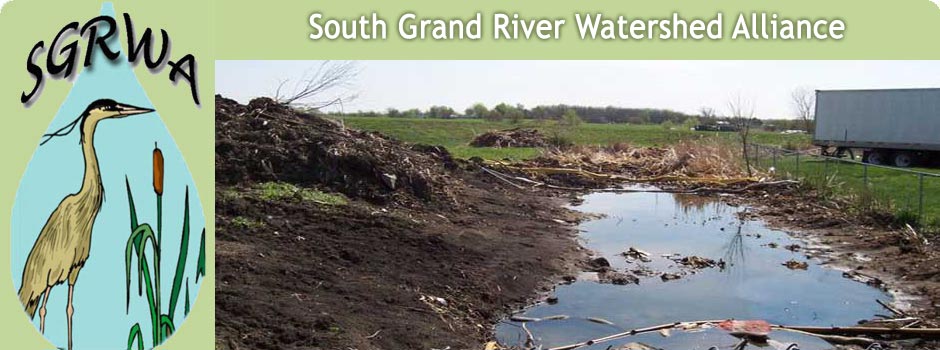Nonpoint source” and “point source” are terms used to indicate the origin of pollutants that enter our waterways. As the terms imply, nonpoint source pollution is pollution that is transported to our waterways by rain and snowmelt runoff—that is, it doesn’t have a single point of origin but comes from many sources; while point source pollution comes from a single identifiable source and is measurable. Examples of point source pollution would include discharges from a sewage treatment plant into a stream, or industrial wastes that are piped into a stream, etc.
Since point source pollution is so identifiable and recognizable it is often considered by many to be the primary cause of contaminated water in our streams, rivers and lakes. However, it is actually the nonpoint source pollution that is the largest contributor to degradation of our water quality. When stormwaters and snowmelt wash across lawns, parking lots, streets, construction sites, crop lands, etc., oil, grease, toxic chemicals, excess fertilizers and pesticides, pet wastes, wastes from livestock, and other pollutants are carried along in the runoff to contaminate our waterways.
Not only do these pollutants necessitate expensive treatment processes to eliminate them from our drinking water, they also degrade the quality of water for recreation, fishing and wildlife habitat.
The amount of these pollutants entering our water systems can be reduced considerably if we each work to change some of our behaviors such as:
- Use natural fertilizers and pest controls instead of lawn chemicals.
- Reduce demand of our limited water resource and reduce strain on septic systems or sewage treatment facilities by conserving water. (Saves money too!)
- Reduce lawn watering and mowing by landscaping with the deep-rooted natives.
- Sweep your driveway instead of hosing it.
- Replace toxic household cleaning products with nontoxic cleaners such as vinegar and baking soda.
- Pick up after your pet and dispose of wastes in toilet.
- Put in a rain garden to help filter and infiltrate stormwater runoff
- Install rain barrels to collect roof runoff and use to water your garden or landscaping.
- Dispose of hazardous wastes properly —never dump them down a storm sewer! Take them to a hazardous waste collection place.
- Use no-or low-till farming methods
- Keep livestock out of streams
- Disturb as little ground as possible for construction projects and use silt fences, straw bales or mulch to prevent sediment in runoff.
- Allow and encourage buffer zones of natural vegetation along streams whether you live in the city or the country. These buffers filter out a significant amount of pollutants.
And, remember, one person can make a difference. Learn more about water quality at www.sgrwa.org
